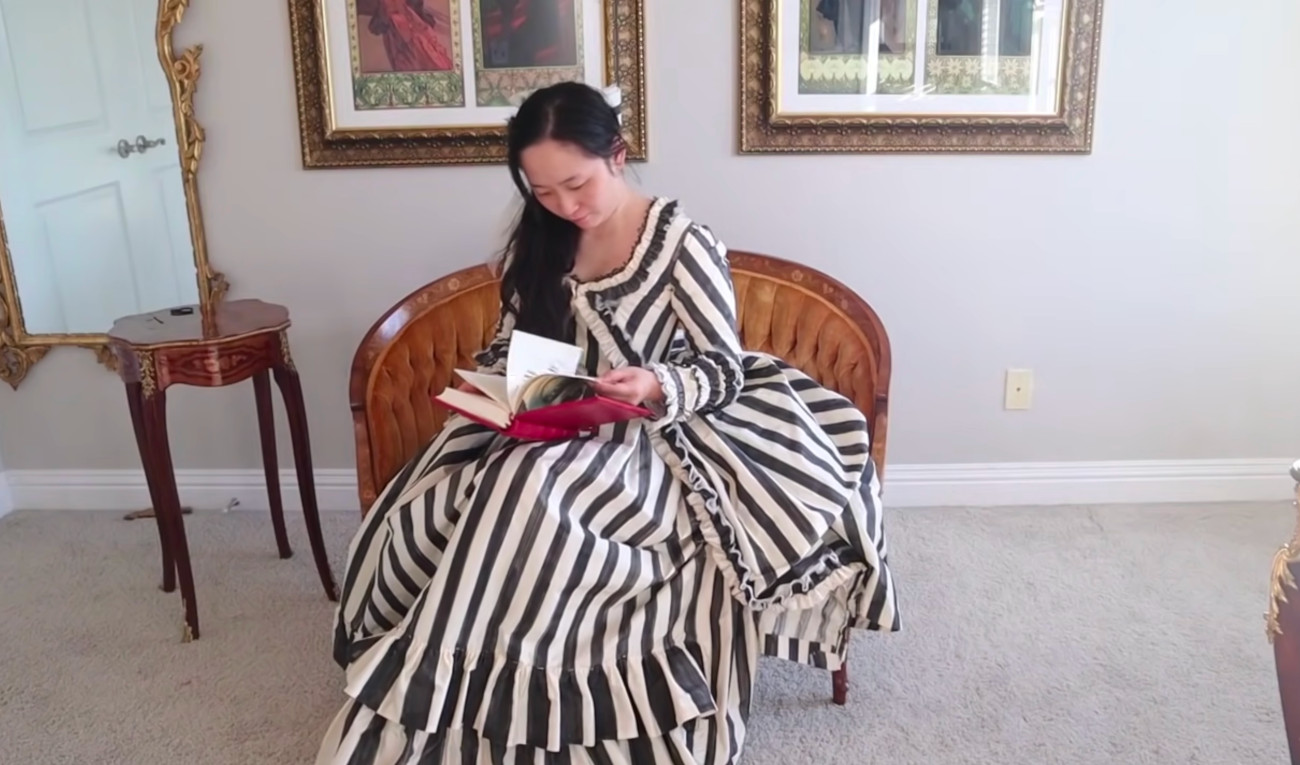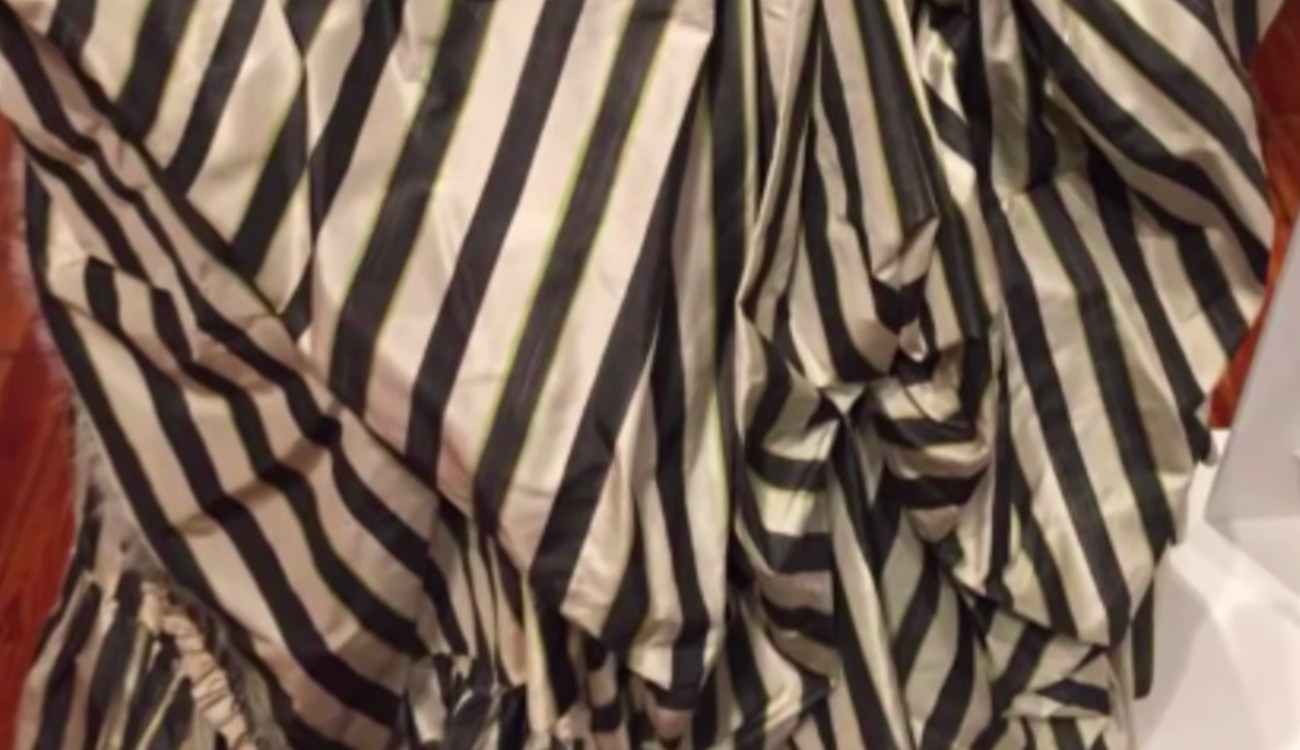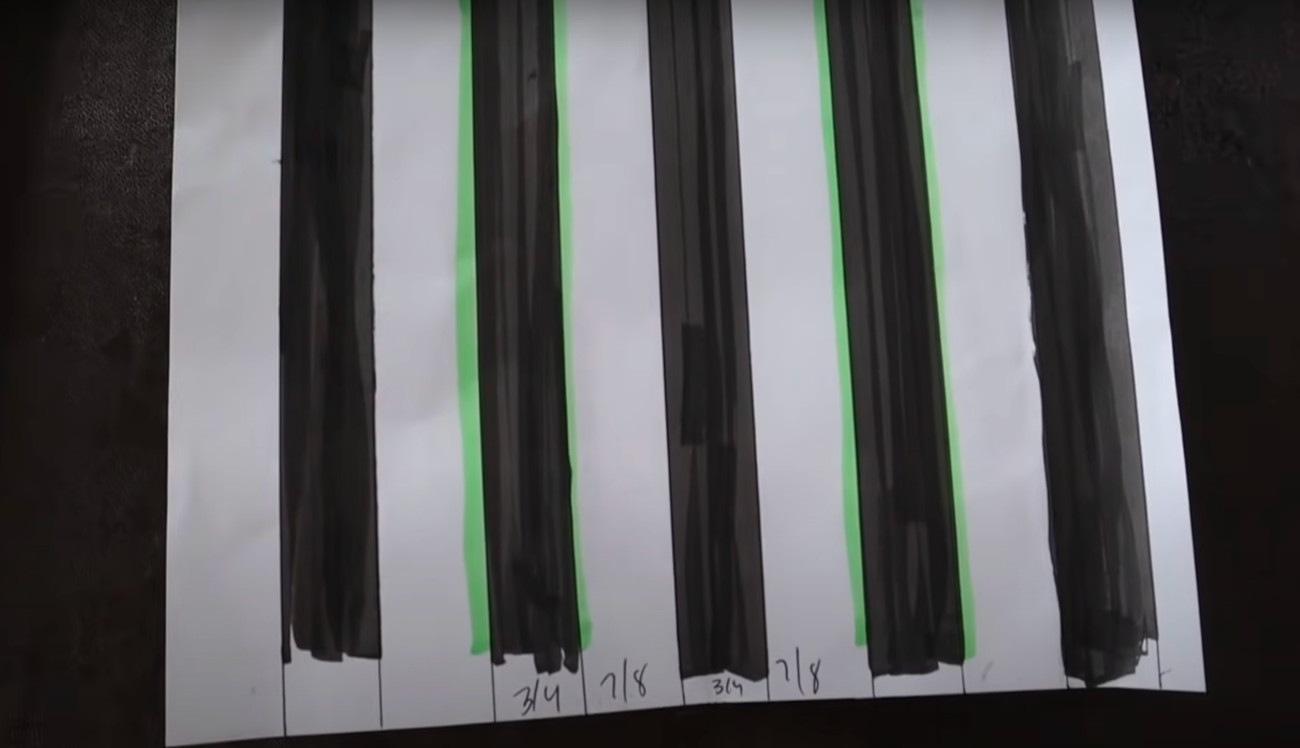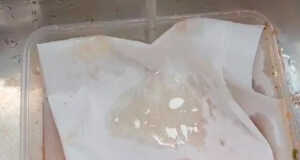A Classic Halloween Movie Dress Was Colored With Permanent Markers
Halloween is known for many colors and patterns, but nothing seems to seep into our subconscious as much as the black-and-white striped pattern. And when it comes in the form of an elegant spooky gown, it’s hard to unbind that association. This is the case with Time Burton’s 1999 movie Sleepy Hollow and the movie’s renowned striped dress. While the patterned stripe dress gets, at most, a few seconds of screen time, it has become a cult classic forever associated with the chilly, ghostly month of October. The complex oddities that went into making such an iconic dress were replicated down to the very last detail by one online seamstress.

For this movie, costume designer Colleen Atwood took inspiration from the past with accuracy. While the movie is set in 1799, all of the fashion is from the 1780s, which would make sense as the small village would not have readied access to the latest metropolitan fashions. Atwood’s attention to detail — paired with striking designs — led her to win an award and proceed to design for other movies as well.
Despite the stunning array of costumes designed, the dress with the shortest screen time imprints itself the most. Sewstine — an online YouTuber with a passion for historical replications — is very familiar with this ever-famous Katrina Van Tassel striped city dress. In fact, this YouTuber made the dress twice before, but never lived up to the standards of the movie dress — what gives?

Sewstine isn’t the only one. Since the movie’s release, the black-and-white striped dress has become one of the most recreated dresses from that movie, yet many seem to never hit the same mark with the dress. Why are replicas so hard to do with this dress?

Well, the answer only came about in the late 2010s when JP Thompon’s exhibit photos of the dress had a caption describing its construction.

This dress was actually made of a white fabric, and every inch of the dress had stripes but they weren’t just any old stripes. Each black stripe was hand-drawn with a simple office supply — a permanent marker. The hand-drawn nature of this dress would explain why it was hard to match the stripes up. The uneven appearance of the stripes is not common in striped fabric patterns you buy in a store.

When examined closely, the white portions of the stripe pattern are ever so slightly bigger than the black stripes. The hand-drawn nature of the dress is seen in one last shot. During the last few seconds of the scene, the under portion of the back skirt is completely white, indicating that the people coloring this dress may have reached their limit (or just run out of permanent markers).

To replicate such a dress may seem unsurmountable, but it’s doable and done. Sewstine finally hit the nail on the head with this third and final replica. Despite all of the work, this dress, with its quirks, was a trick to make, but it was and still is a visual treat to the eyes. Do you think you’d have the patience to draw all of those stripes?
You can watch the replication process here.










